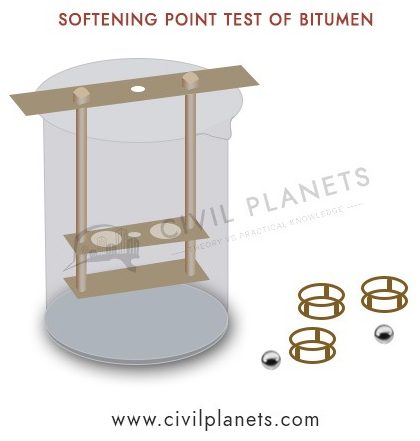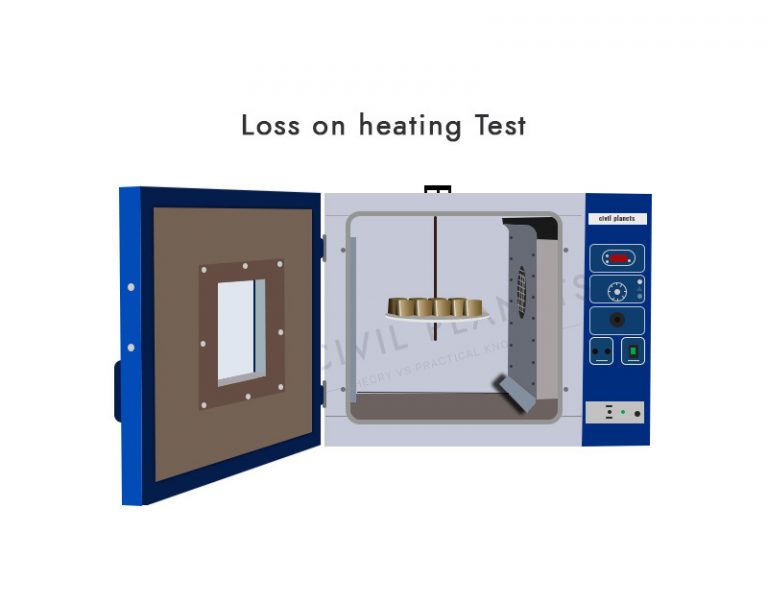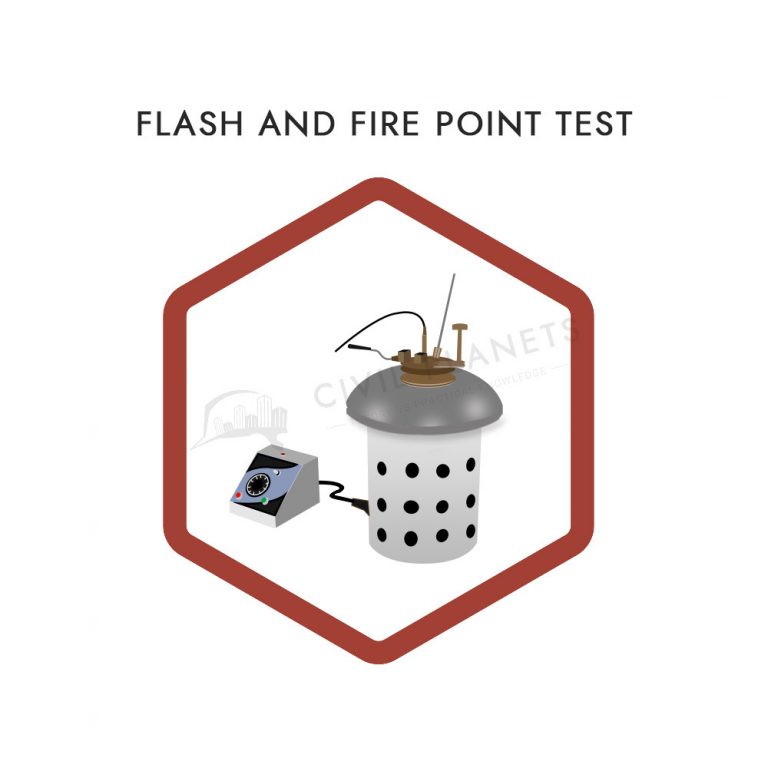Earlier, we had discussed the penetration test of bitumen to find out the consistency or hardness, grade the bitumen for the construction work. In this, we are going to test the softening point of bitumen.
The softening point test used to determine the melting point in which the bitumen reaches the viscosity (semi-liquid form).
What is the softening point test?
A laboratory test used to find out the bitumen viscosity (semi-liquid form) at a certain degree of temperature is called a softening point test. It is also named ring & ball test because it is performed using a steel ring and a ball.
The necessity of softening point test
The bitumen will not be suitable for road work if it starts to melt at atmospheric climate conditions. So the softening point test is conducted to ensure that the bitumen can withstand the hot weather conditions.
According to the requirement of the usage, the bitumen can be classified and used for pavement construction.
Objective
To determine the softening point of the bitumen specimen as per the IS code 1205.
Apparatus Required
- Thermometer – To measure up to 120°c and an accuracy of 0.5°c.
- Steel ball 2 numbers – 7.5mm diameter & weight – 3.5 grams
- Brass ring 2 numbers – Depth is 6.4mm & inner diameter for top – 17.5 mm & inner diameter for bottom – 15.9mm
- Ball frame / Ball guide 2 numbers – to resist the steel ball movement & hold it in position. The ball guide & the ring can fit each other and should be placed in the middle of the metal plate frame.
- Heat resistant beaker – Capacity of 600ml (85mm inner dia & 120mm Depth)
- The metal frame consists of 3 plate – The top plate has a hole to insert the thermometer. The middle plate has 2 slots to place the ring. The distance between the middle & bottom plate is 25 mm.
- Hot Plate – It is connected to the energy regulator, which can control the rate of heat production.
- Stirrer – Distribute the uniform temperature in the beaker.
- Distilled water
Sample Preparation
- The bitumen should be heated in the temperature range of 75 to 100°c to reach the fluid state.
- Meanwhile, make a combination of glycerol and dextrin and apply it on the glass surface. It has to be done to avoid the affix of bitumen in the plate.
- Now place the ring & pour the bitumen carefully into the ring & allow it to cool up to 30 minutes in a natural atmosphere.
Now the bitumen sample is ready to start the procedure of softening point test.
Procedure

- Fill the distilled water into the beaker, and the water’s magnitude should be immersed up to the middle plate of the metal frame.
- Now fix & tighten the ring with the ball guide. It should be placed on the slot provided on the middle palate.
- The steel ball should be cooled at 5 °c & placed over the ball guide. Now immerse the metal frame inside the beaker.
- Insert the thermometer through the top plate centre hole.
- Now fix the stirrer & switch on the hot plate. The temperature increases gradually at 5 °c per minute inside the beaker. Ensure uniform heat distribution in the beaker.
- The bitumen will be melted at a specific temperature & the steel ball will fall with the bitumen on the bottom plate.
- Record the temperature of both two balls falling on the bottom plate.
Results
Take the reading through the thermometer when the steel balls fall on the surface of the bottom plate. The average temperature is the softening point of the bitumen.
Softening Point of Bitumen = Degree Celsius.
The allowable difference between the two readings is 1 °c.
Lab Report
| Bitumen/Tar | Ball 1 | Ball 2 |
| Temperature @ ball touches the bottom | ||
| Average Penetration value | ||
The recommended softening point bitumen as per IS code 73 have been listed below.
| Paving Grades | Softening Point |
| VG 10 | 40 |
| VG 20 | 45 |
| VG 30 | 47 |
| VG 40 | 50 |
Precaution
- Ensure the specimen is free from moisture & dust.
- Ensure using a pair of hand gloves while handling the test.
- Ensure to make a mix of glycerol & dextrin to avoid the bitumen stick.
- Repeat the test if the difference between the two readings is higher than 1 deg celsius.
Video Illustration
Video Courtesy – NCTEL
Happy Learning 🙂





